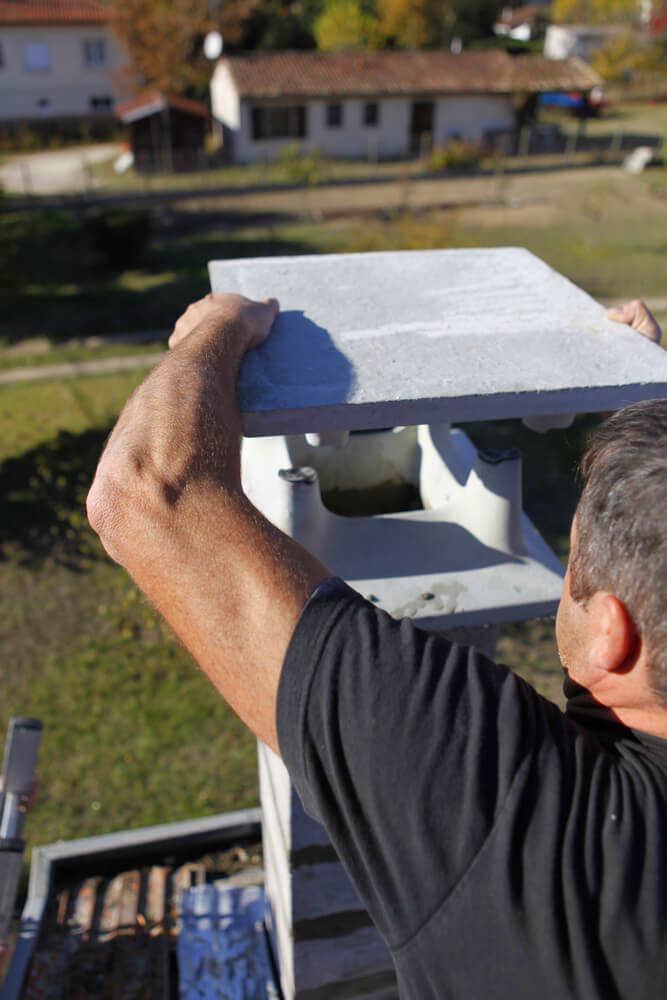The chimney cap is small and often overlooked, but it plays a big part in protecting your chimney and helping it to work properly and safely. Many older generations may not see a point in a cap when the amount of water that may fall into the flue is “nothing” and the chimney has always been fine “before”. We urge homeowners to listen to the professionals who are constantly working and learning to make fires more safe year after year.

Prolong Your Chimney’s Life with a Chimney Cap
The chimney cap adds a bit of cosmetic flair to the chimney and is relatively inexpensive, but it does a big job. The chimney cap covers the flue opening, preventing water damage, keeping animals out, and stopping rogue sparks from escaping.
- Prevent Water Leaks – Your chimney system can take on water with just a small amount of damage to the masonry. However, if the cap is missing from the flue opening, water can fall directly into the system, damaging the system from the inside, out. Even small amounts of water, mixed with soot and creosote can lead to deterioration of the flue liner, unwelcome odors, and more. Large amounts of water, like that found in areas with frequent snow (like our region), can be detrimental to an uncapped chimney system, leading to water damage such as rust, clogs, deterioration, stains, mold, and more.
- Prevent Animal Intrusion – Installing a chimney cap will keep critters out of your chimney whether they’re big or small. The cap is equipped with a metal mesh that keeps even tiny birds out of the chimney opening, preventing them from nesting, carrying in materials, leaving droppings, and more. Any animal that can climb or fly onto your roof can also get down inside your flue opening, and even if an animal climbs out on its own, it still leaves behind debris and damage. If the animal suffocates and dies in the chimney, it’ll have to be removed by a professional, but not before it causes stinky odors and noxious fumes.
- Prevent Rooftop Fires – Your fire may roar and shoot sparks right up the flue with the smoke. These sparks can escape an uncapped chimney, igniting leaves and other materials on the roof, or the roof itself. These rogue sparks can even travel down to dry grasses and shrubs below, resulting in a devastating wildfire.
Types of Chimney Caps
When it comes to choosing a chimney cap, it’s important to talk to the professionals that know about your area. The climate and wildlife where you live may help us choose one brand or product over another. If you’re in an area of high winds we may recommend a certain type of cap that deflects wind away from the flue opening. If you have complaints of heat loss and high utility bills, we can help with that too!
Top-mount dampers double as a damper and a chimney cap while protecting your chimney better than any other product on the market when the fireplace is not in use. The rubber-seal is airtight and protects the flue opening completely from water penetration and animal tampering. When you switch from a throat damper to a top-mount damper you will begin saving money on heating and cooling immediately. Ask about it today.
